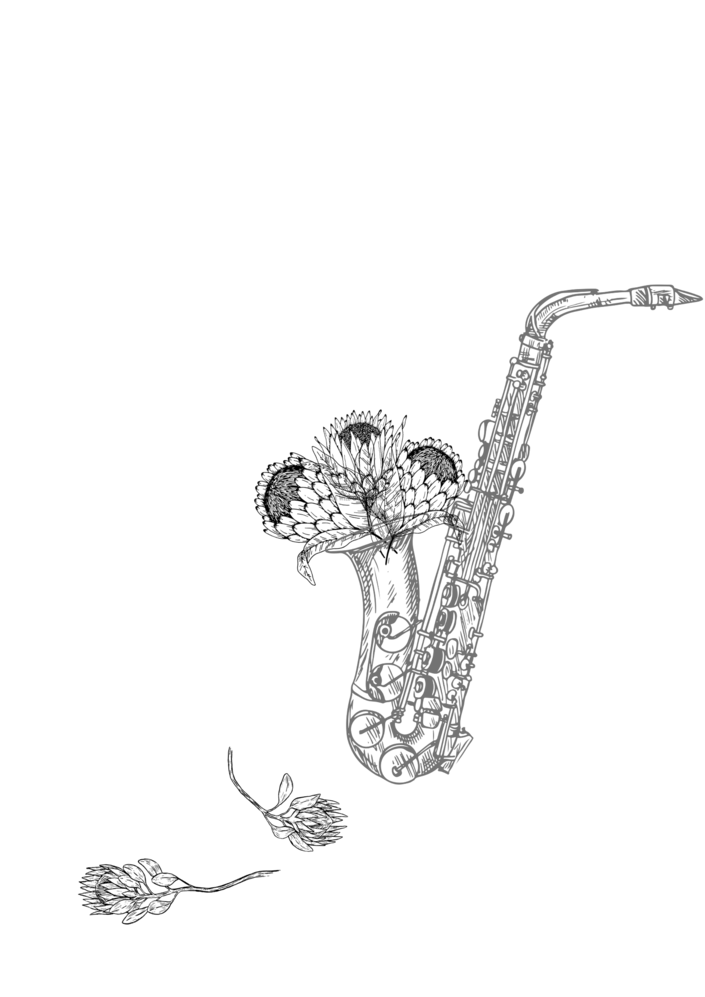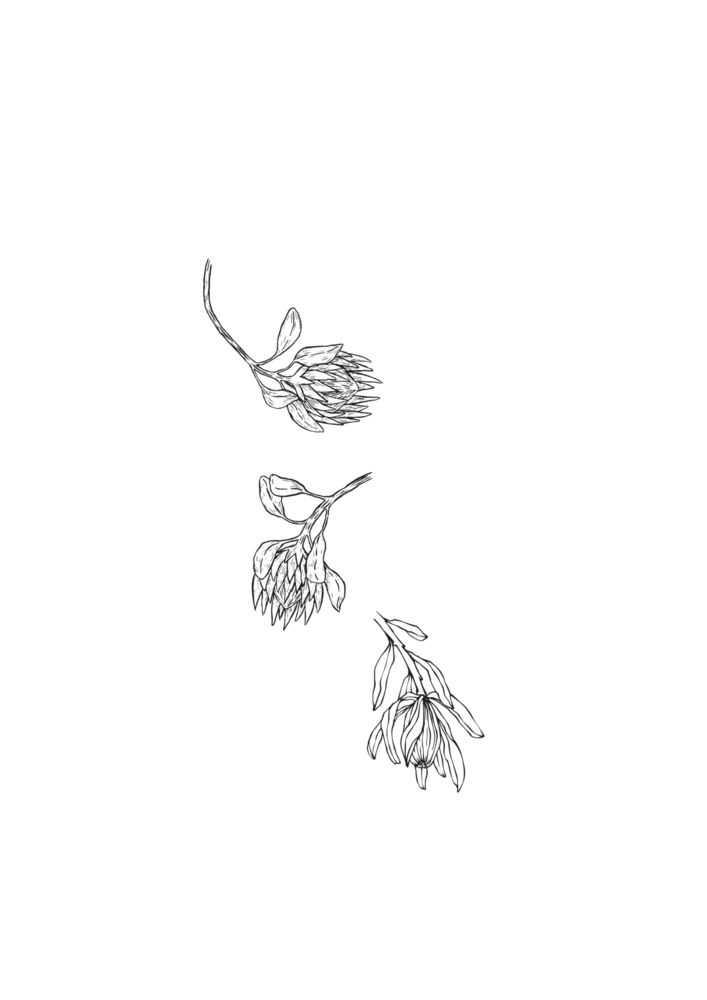The questions asked by this examiner in the moderation report were the following:
-
What are the musical components (harmonic, stylistic, formalistic) in the piece that make these compositions South African and the performance South African?
-
Can these components of South African music be identified in the compositions and the performance?
-
What makes the work South African?
-
I found these questions problematic for several reasons. The first is that I felt the questions were centered on issues beyond the scope of my research which explored the creative aspects of collaboration - and not the essence of what South African music is (nor the politics that cannot be separated from this discussion). I was merely documenting the artistic process of my experience working with South African composers whom I greatly admire. I felt alarmed: What ideologies are being taught about South African music, artistic research, collaboration and music in general at South African universities? Is the term "South African Art Music" being forced upon South African composers? Therefore, in this research exposition, I feel brave enough to finally address the term (and indirectly the questions that were proposed to me).
1.2 The Research Trajectory and Problem Statement
For the past two years, I have collaborated with several leading South African composers in various ways. I commissioned works for saxophone and piano from Owen Dalton, Allan X. Chen and Arthur Feder. I also commissioned a solo work by Clare Loveday. Each of these collaborations were vastly different. Some composers I worked with extensively, and others I worked with at a distance. I was interested in how I could use these collaborative experiences as a tool to further investigate a rather controversial genre in the South African music scene: South African Art Music. I discovered that there was limited literature documenting the artistic process when engaging in performer-composer collaboration in a South African context. Therefore, I thought I could use this as an opportunity to investigate collaborative practice as well as give another, more personalised, reflective angle when trying to explore South African art music.
I have previous experience with research in this field. This research exposition is an extension of the framework I created but was never truly able to realise. My previous research entitled South African Saxophone Compositions: Exploring the process of creating new music for saxophone through the lens of artistic research and performer-composer collaboration (2023) - was heavily criticised by an external examiner at the university where I was previously enrolled. They remarked that I did not answer fundamental questions regarding what South African music is at its core, and therefore stated that my thesis was greatly lacking in its argument.
1.4 Methodology
During this research, I will take an in-depth look at collaborations between myself and four South African composers namely Owen Dalton, Allan X. Chen, Arthur Feder and Clare Loveday. As this research is practice-based, I decided to structure this research through a multiple-case study approach. Each collaboration is investigated separately through zooming in on the creative process, analysis of the final work through the use of themes as well as reflections from myself and the composer. The creative process was documented through the use of audio, video, my reflections and that of the composer. Interviews and correspondence with South African composers (Dr Kevin Volans, Dr Antoni Schonken, Arthur Feder, Professor Hendrik Hofmeyr, Conrad Asman and Dr Cara Stacey) provided valuable testimony to supplement my findings, experiences and reflections.
This research is divided into five chapters. Chapter 2 explores the discourse surrounding African Art Music, and South African Art Music as well as testimony from several South African composers. Chapter 3 introduces The South African Saxophone Catalogue and explains how to navigate and access the online system I developed for documenting the compositions I sourced. Chapter 4 explores the creative process between myself, and five South African composers through the form of case studies engaging in varying levels of collaboration. I also decided to include a section with my duo partner Seung Ree Lee reflecting on the process of rehearsing, workshopping and finally performing the works. Chapter 5 will provide conclusions and arguments derived from this research.
To investigate South African Art Music in more depth, I felt that I had to understand what has been written, the scope of the existing music as well as who wrote the music. I had to scrutinise this from a perspective that I understand: the classical saxophone. For the past year and a half, I embarked on a journey collecting saxophone music composed by South Africans. I discovered that many of these works have been lost, destroyed, remain undocumented, unrecorded, or even unperformed. In this research, I wanted to bring these compositions to the fore and ensure that they are documented for future generations of saxophonists to be able to perform these works as part of their repertoire. I decided that I needed to create a resource that would allow people to see the repertoire that is in existence. This was realised through the creation of an online catalogue documenting the collected South African works as well as creating a networking space between composers and those wishing to engage with their work. This will be discussed in detail in chapter three.
Collaboration
Collaboration is the unique process and union of two musical ideas that are usually deemed as being separate processes i.e., composition and performance (Foss, 1963: 45). Heather Roche’s is a researcher, collaborator and clarinettist who has extensively documented her collaborative projects through her research that provides clear guidelines for those wishing to embark on performer-composer collaborations. Roche’s doctoral dissertation explored dialogue-based collaborations with composers writing new works for the clarinet. According to Roche in her doctoral thesis entitled Dialogues and Collaboration in the Creation of New Works for Clarinet (2011), collaboration can be defined as a creative practice that engages with both the work and the relationship between collaborators to create. This relationship is symbiotic (Roche, 2011: 11).
The Creative Process
I find the creative process in a collaboration to be an incredibly exciting aspect of the exchange. No longer an individual endeavour, the artistic space becomes shared with possibilities expanding. Vera John-Steiner in Creative Collaborations (2000) states that collaboration is a more effective means of art-making as opposed to individual art-making:
“Creative collaborators provide important insights for ways to build joint projects, and their practices challenge mainstream theories focused on the individual.” John-Steiner (2000: 3)
Roche (2011: 23) describes the shared voice that aims to blend personalities, aesthetic preferences, and the development of a common history between collaborators. An artist is often not aware of the dimensions during the process of creation leading up to the final artistic result (i.e. finished compositions and performance) and is only aware of the moment of creation itself (Coessens, 2014: 69).
1.1 Introduction
The saxophone has been a huge influence in my life since I was a child – it had a great effect on my development, my life choices and who I am as an individual. This deep connection to the instrument was a residing force that convinced me to pursue music as a career. Throughout my South African university years, I felt my saxophone was an old friend with whom I had shared many fond memories and pinnacle moments in my studies. It was the reason I journeyed abroad to continue my studies.
Arriving in the Netherlands, however, my dear companion caused a great feeling of desiderium within me. Playing in front of people, my musical ideas and my sense of confidence withered away at the sheer thought of having to perform. I was devastated to find that something that filled me with such joy was replaced by an overwhelming melancholy. This led me through a path of tumultuous soul-searching for several months. I questioned why this unfurling of something so natural to me led to it becoming an almost foreign entity. The conclusion of these months of disassociation from my saxophone was deeply linked to “identity”. I felt moving abroad has made me constantly question who I am as well as who I am as an artist. I am grateful for being here in the Netherlands as well as how this struggle has inspired my research. The title for my research is therefore "Finding Home" as this is what I have been subconsciously trying to do.
These thoughts and emotions made me reflect greatly on culture, identity and autonomy. This translated into my music-making. In a sense, moving abroad made me realise my strong attachment to my country, my African-ness and my awareness of how one’s identity can be translated into music.
I began asking myself questions about this music:
What is South African music really? Why is the term met with so much controversy? What are the thought processes of South African composers when creating music? How has the past impacted the perceptions and processes of this music? Is there a particular method of performance needed for the interpretation of this music? Can one even define South African art music? How are the origins, history and current affairs of this music being taught at South African universities? How do I fit into all of this?
1.3 Statement of Purpose
The academic aims of this research were to investigate “South African Art Music” through collaborative practice and the classical saxophone. This research aims to investigate both the performer and composer’s perspective when collaborating to create new music together as well as the different degrees of collaboration and how this impacts the final artistic product. It also explores the artistic process in collaborative practice. The artistic aims were to identify emergent themes in dialogue-based collaborations and investigate if these emergent themes reflect anything that can be defined as inherently South African. The goal was to investigate how various levels of dialogue between collaborators can affect the final performance. The strategic aims of this research were to ensure that new works by South African composers were added to the repertoire of the classical saxophone. It also aimed to create a platform where existing South African saxophone works can be documented and preserved, as well as promote the classical saxophone and inspire more South African composers to write for the instrument.
1.3.1 Research Question
Using collaborative practice and the saxophone as a medium, how can one explore “South African Art Music”?
African Art Music vs South African Classical/Art Music
Using the term “Africa” to group music from the African continent into one - ignoring the regional music cultures (such as West, North, Central and South African music cultures) - is a colonial strategy. This thinking resulted in the belief that Africa is a country which shockingly still permeates our society today (Riva, 2019: 130). Gerhard Kubik (1988) strongly expressed that many African cultures do not have a term for “music” and the word is in fact a European concept.
Kofi Agawu’s 1992 essay, Representing African Music, critiques Western erudition on African music. It helped me gain more clarity on the slippery tautological slope of the question “What is African music actually?”.
Agawu (1993: 264) states:
“Representing African music is of course a complex affair, and it has been part of my aim in developing this critique not to suggest that there is a single, proper method of representation…Differences between North American and European ethnomusicologists writing about Africa, between African scholars and their Western counterparts, between musicologically oriented ethnomusicologists and anthropologically oriented ones, between armchair ethnomusicologists and those who have done fieldwork: these and other identities change with time, circumstance, and occasion. And this is as it should be, for the musical object is far too complex to allow a satisfactory view from only one.”
The Nigerian scholar Ademola Adegbite (2001: 77) describes African Art Music as a cross-fertilization of both the West and Africa. African Art music’ has often been agglomerated with the compositional practices of West African composers. Still, its possible considerations to South African music have been minimally discussed as a result of South Africa’s isolation from the rest of Africa both politically and artistically throughout the majority of the 20th century (Muller, 2022: 6).
The Classical Saxophone in South Africa
There is a dearth of literature regarding the investigation and analysis of classical saxophone repertoire in a South African context. I have completed research previously and utilised my findings from my antecedent thesis in this exposition. I am aware that there are a few of my previous colleagues at South African universities who are currently engaging in research within this field. I am in regular contact with these individuals.
Clare Loveday - who is one of the included composers in this research- wrote her doctoral dissertation - Collusion and Collision: a Composition Portfolio focusing on Straight Saxophone, and a thesis (2009) - which gives insight into seven of her original compositions for saxophone. This remains one of the more prevalent literary sources that I have found delving into classical saxophone culture and repertoire in South Africa. It also gives insight into Loveday’s compositional techniques which was helpful when learning her work as well as collaborating with her.
A Performer’s Perspective on South African Art Music
I managed to find many articles and dissertations on South African Art music from a musicologist's perspective, but I found a significant dearth in the literature concerning the perspective of the performer. I explored Marli Stolp’s doctoral dissertation entitled Contemporary Performance Practice of Art Music in South Africa: A Practice-based Research Enquiry (2012) which investigated her experience of art music in South Africa by combining practice and academia through the method of practice-based research.






